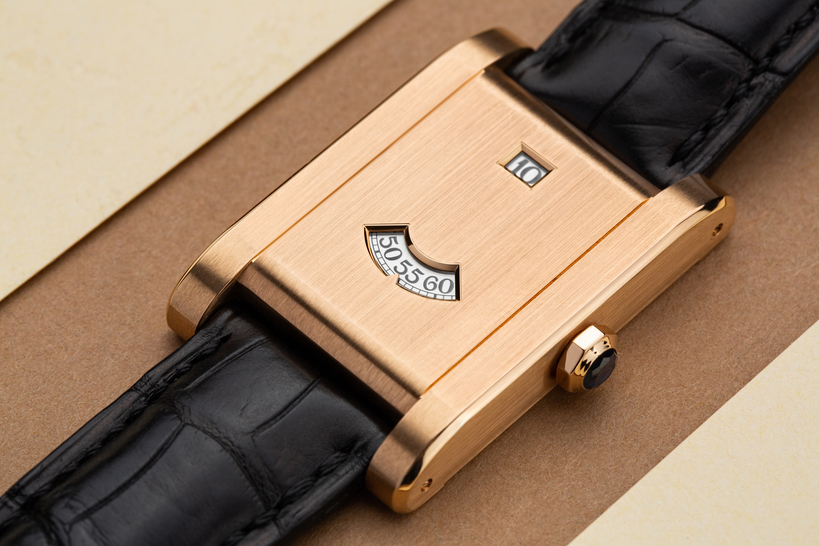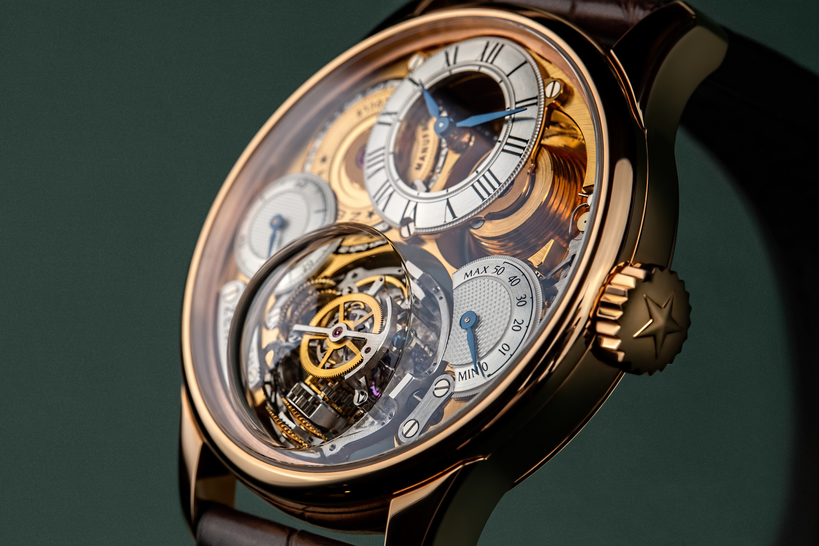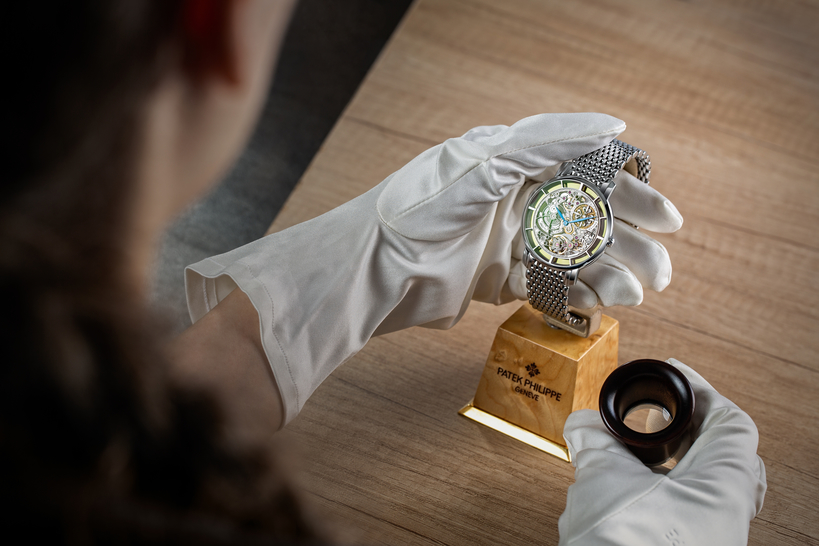Inspired by George Daniels' genius — from idol to partner.
The Isle of Man. This British island in the middle of the Irish Sea between Northern Ireland, Scotland and England is synonymous with big names among fans of haute horlogerie. Of course, the first name that springs to mind is the great watchmaker and horologist George Daniels, who worked there from 1982.
Those familiar with the history of the self-winding wristwatch will recall its inventor John Harwood, who also spent much of his working life on the island. In 2020, the Isle of Man Post Office launched a series of postal stamps to commemorate three celebrated watchmakers. The third figure was of course Roger William Smith.
Roger Smith is an independent watchmaker and Bronze Medalist of the British Horological Institute — a prize only awarded to the most outstanding graduating student of any given year.
George Daniels, a graduate of the Manchester School of Horology, is known to have made a great impression on Roger Smith when Daniels was invited as a speaker when Smith was studying there. He was particularly impressed by the Space Traveler he was shown, which the watchmaker had made entirely by himself.
In 2019, Sotheby's sold the Space Traveller for around USD 4.6 million, making it the most expensive British-made pocket watch ever sold at auction — a record held from that moment until June 2023.
So it's no wonder Daniels and his hand-crafted pocket watch made such an impression on Smith as a budding watchmaker, and got him thinking about trying to make something similar himself.
And that's exactly what he did, combining his hobby with repair work and watchmaking services for various employers. This is where a textbook story begins of how an inspired, aspiring young watchmaker rose to the top, mastering his trade through hard work, a willingness to learn, inventiveness, and persistence.
Working on his own first pocket watch, which he decided to equip with a one-minute tourbillon and a detent escapement, Roger Smith was guided by the information he underlined in a book called "Watchmaking" by the very same George Daniels.
The movement was made in the traditional style of English pocket watches from the 19th century, like all of Roger Smith's subsequent movements. The work took him under two years to complete, between 1990 and 1992. And where do you think the young watchmaker brought his first watch?
Yes, he went to George Daniels on the Isle of Man, in the hope that he could convince Daniels to take him on as his apprentice. The master watchmaker's verdict was short and not very sweet: no, he wouldn't, and his main objection was that the watch looked like it had been "hand-made", not "created".
Anyone would find such a cold reception disheartening, but not Roger Smith. He clearly understood what Daniels expected from this type of watch, and set about creating his second project with no less zeal. We're talking about Pocket Watch No. 2, where the one-minute tourbillon and spring detent (chronometer) escapement were joined by a perpetual calendar.
Work on Pocket Watch No. 2 continued until 1997, i.e. it took Smith five years, although the movement was already complete in terms of functionality by 1993.
However, when Roger Smith took a closer look at some of the components he'd created for the movement a year earlier, he noticed that he hadn't quite achieved the level he'd reached working on more recent components. So he remade part of the movement, and that took another year.
Then the same situation repeated itself, when Smith once again discovered that he was no longer happy with the second set of components he'd made in the previous year. So in this cycle of self-improvement, Smith worked on Pocket Watch No. 2 until 1997, until he was finally content with the result.
Once he had the finished piece, Roger Smith arranged another meeting to show Daniels Pocket Watch No. 2. Daniels examined the watch, asking questions along the lines of: "Who made that escape wheel?" And Smith would reply, "I did". Then Daniels would ask, "Hm... And who made this escapement?" Again, Smith's reply would be "I did". "Hm..."
This back-and-forth went on until Daniels had scrutinized the entire movement. He congratulated Smith on his beautifully executed work, and called him just six months later, offering him an apprenticeship — that's how Roger Smith became the only apprentice George Daniels ever had.
That was right around the time when Daniels reached an agreement with the Swiss brand Omega, who had acquired the rights to the co-axial escapement he'd invented. One of the terms of their agreement was that Omega would supply Daniels with fifty movements that he could use in his Millennium series of wristwatches to sell under his own brand, Daniels London.
This caliber was the Omega 2500 — a modified version of an ETA 2892 caliber, equipped with the co-axial escapement created by Daniels and a free-sprung balance. The movement was significantly modified for the Millennium series: Daniels didn't intend on using it in the same form presented in the Omega watches.
The watchmaker's strive to finish the movement in a traditional style of English watchmaking are noticeable: the gilded plates and bridges decorated with a matte finish, the rotor made of solid gold engraved with a guilloché pattern, the use of blued screws, and the hand-engraved inner chapter ring.
Needless to say, the watch's case, dial, hands and buckle on the strap were all made by Daniels and Smith, which were also rendered in the typical English manner.
The limited edition was produced for a three-year run, and the total number of watches made was 56: one prototype in a yellow-gold case with a nickel movement, 47 yellow-gold editions, and eight pieces in white-gold. With all this going on, Roger Smith never stopped thinking about his own career, and made time to work on his own projects.
One of them was his Pocket Watch No.3, which Smith made for his first client. He also made everything in this watch by hand, and included a 15-second remontoir (constant force mechanism), Peto cross detent escapement, and an up/down mechanism to indicate the power reserve.
Credits taken from: www.phillips.com, www.rwsmithwatches.com, www.sothebys.com, www.BBC.co.uk












